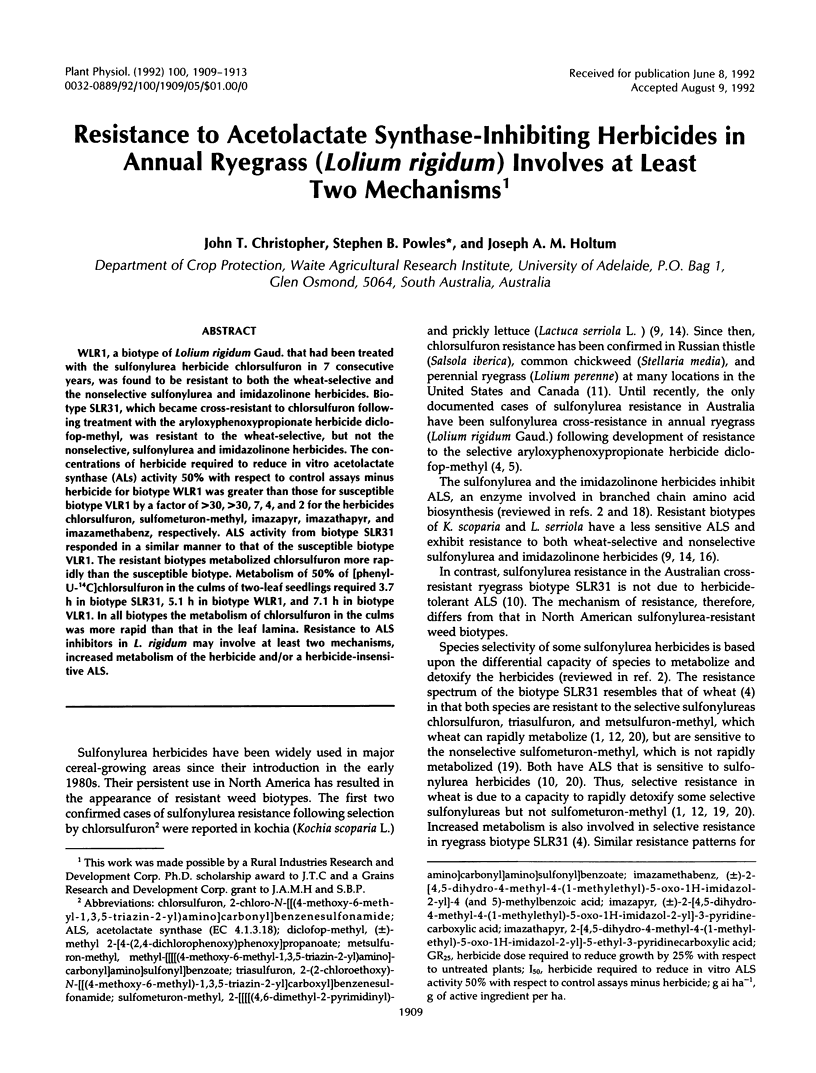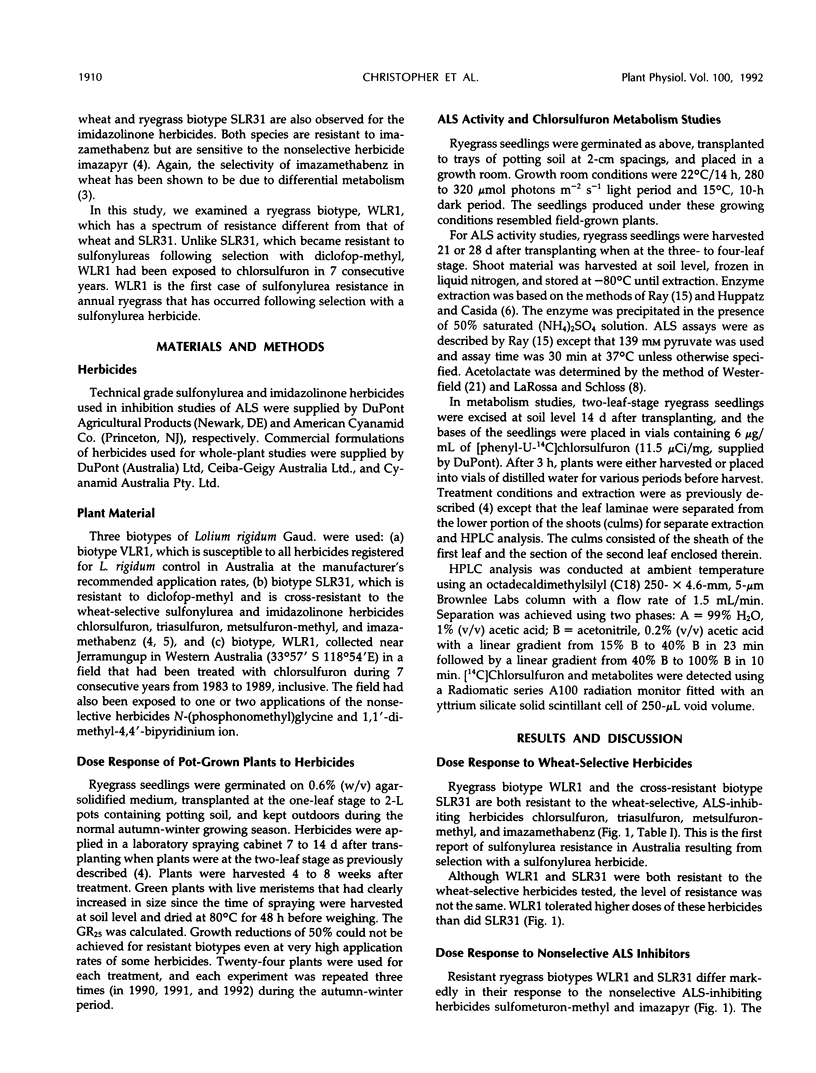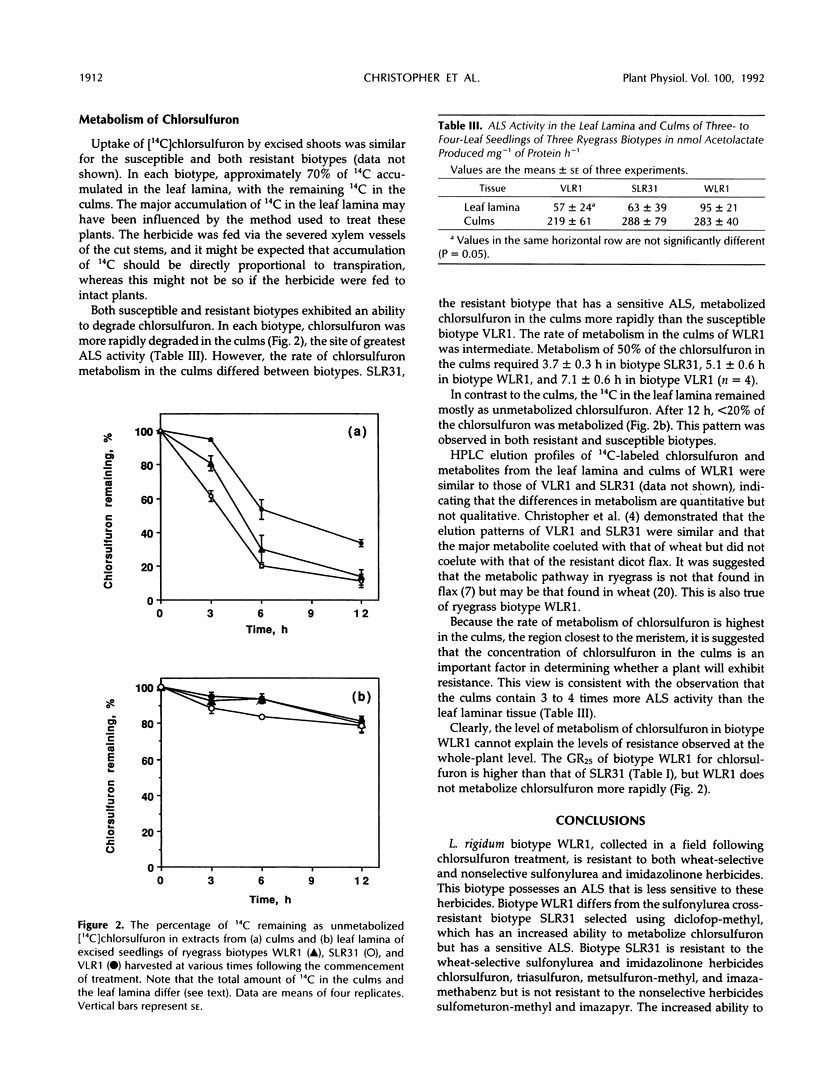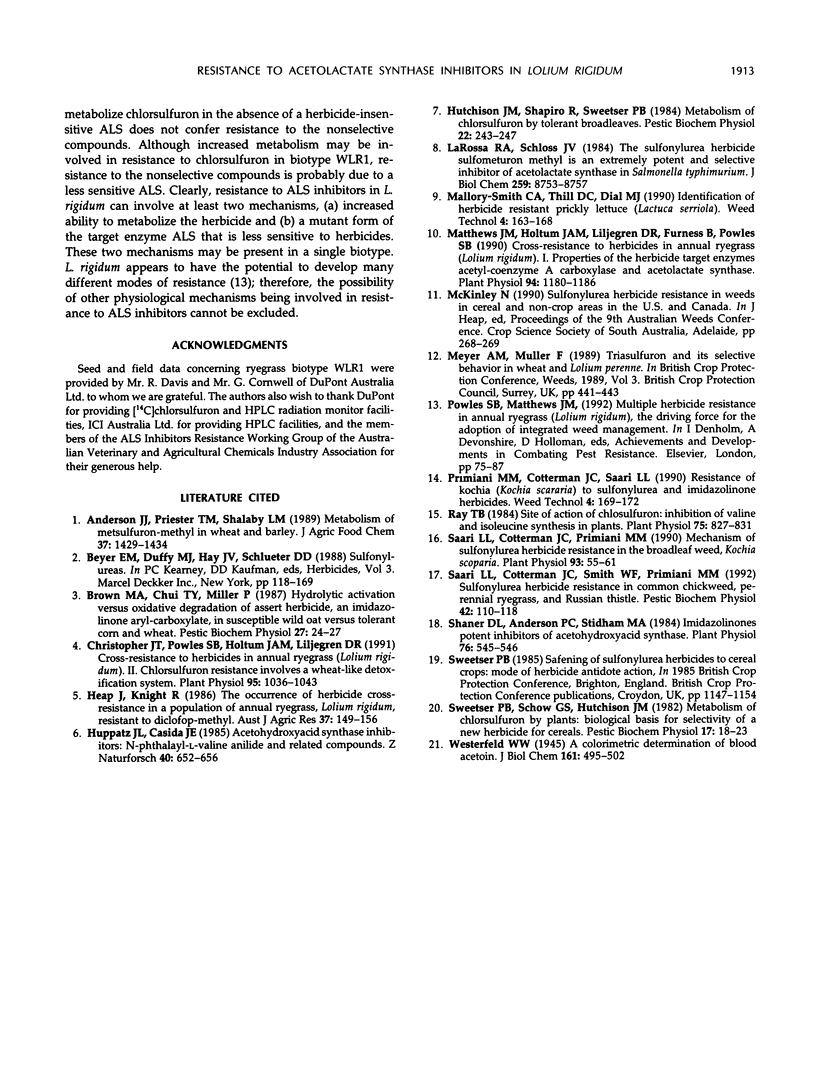Abstract
WLR1, a biotype of Lolium rigidum Gaud. that had been treated with the sulfonylurea herbicide chlorsulfuron in 7 consecutive years, was found to be resistant to both the wheat-selective and the nonselective sulfonylurea and imidazolinone herbicides. Biotype SLR31, which became cross-resistant to chlorsulfuron following treatment with the aryloxyphenoxypropionate herbicide diclofop-methyl, was resistant to the wheat-selective, but not the nonselective, sulfonylurea and imidazolinone herbicides. The concentrations of herbicide required to reduce in vitro acetolactate synthase (ALs) activity 50% with respect to control assays minus herbicide for biotype WLR1 was greater than those for susceptible biotype VLR1 by a factor of >30, >30, 7,4, and 2 for the herbicides chlorsulfuron, sulfometuron-methyl, imazapyr, imazathapyr, and imazamethabenz, respectively. ALS activity from biotype SLR31 responded in a similar manner to that of the susceptible biotype VLR1. The resistant biotypes metabolized chlorsulfuron more rapidly than the susceptible biotype. Metabolism of 50% of [phenyl-U-14C]chlorsulfuron in the culms of two-leaf seedlings required 3.7 h in biotype SLR31, 5.1 h in biotype WLR1, and 7.1 h in biotype VLR1. In all biotypes the metabolism of chlorsulfuron in the culms was more rapid than that in the leaf lamina. Resistance to ALS inhibitors in L. rigidum may involve at least two mechanisms, increased metabolism of the herbicide and/or a herbicide-insensitive ALS.
Full text
PDF




Selected References
These references are in PubMed. This may not be the complete list of references from this article.
- Christopher J. T., Powles S. B., Liljegren D. R., Holtum J. A. Cross-Resistance to Herbicides in Annual Ryegrass (Lolium rigidum) : II. Chlorsulfuron Resistance Involves a Wheat-Like Detoxification System. Plant Physiol. 1991 Apr;95(4):1036–1043. doi: 10.1104/pp.95.4.1036. [DOI] [PMC free article] [PubMed] [Google Scholar]
- Huppatz J. L., Casida J. E. Acetohydroxyacid synthase inhibitors: N-phthalyl-L-valine anilide and related compounds. Z Naturforsch C. 1985 Sep-Oct;40(9-10):652–656. doi: 10.1515/znc-1985-9-1010. [DOI] [PubMed] [Google Scholar]
- LaRossa R. A., Schloss J. V. The sulfonylurea herbicide sulfometuron methyl is an extremely potent and selective inhibitor of acetolactate synthase in Salmonella typhimurium. J Biol Chem. 1984 Jul 25;259(14):8753–8757. [PubMed] [Google Scholar]
- Matthews J. M., Holtum J. A., Liljegren D. R., Furness B., Powles S. B. Cross-Resistance to Herbicides in Annual Ryegrass (Lolium rigidum): I. Properties of the Herbicide Target Enzymes Acetyl-Coenzyme A Carboxylase and Acetolactate Synthase. Plant Physiol. 1990 Nov;94(3):1180–1186. doi: 10.1104/pp.94.3.1180. [DOI] [PMC free article] [PubMed] [Google Scholar]
- Ray T. B. Site of action of chlorsulfuron: inhibition of valine and isoleucine biosynthesis in plants. Plant Physiol. 1984 Jul;75(3):827–831. doi: 10.1104/pp.75.3.827. [DOI] [PMC free article] [PubMed] [Google Scholar]
- Saari L. L., Cotterman J. C., Primiani M. M. Mechanism of Sulfonylurea Herbicide Resistance in the Broadleaf Weed, Kochia scoparia. Plant Physiol. 1990 May;93(1):55–61. doi: 10.1104/pp.93.1.55. [DOI] [PMC free article] [PubMed] [Google Scholar]
- Shaner D. L., Anderson P. C., Stidham M. A. Imidazolinones: potent inhibitors of acetohydroxyacid synthase. Plant Physiol. 1984 Oct;76(2):545–546. doi: 10.1104/pp.76.2.545. [DOI] [PMC free article] [PubMed] [Google Scholar]


